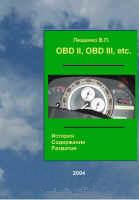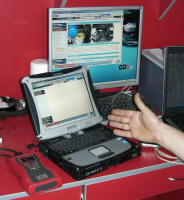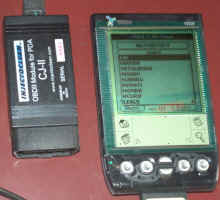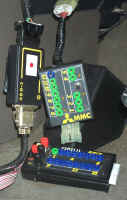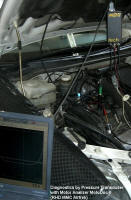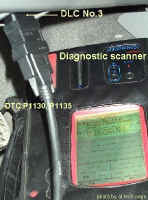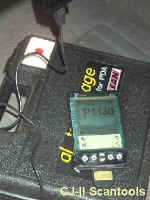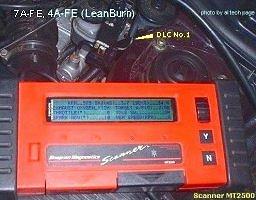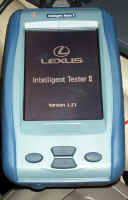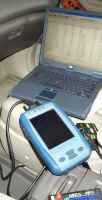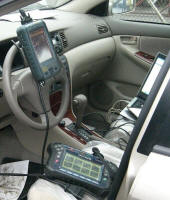Intelligent Tester II Toyota / Lexus by DENSO (OEM No.) v4.01 (OEM No. PZ432-IT...)
All cars and light trucks built for sale in the United States after 1996 are required to be OBD-II compliant. The European Union adopted a similar law in 2000 for gasoline-powered vehicles, and in 2003 for cars with diesel engines. An OBD-II compliant vehicle can use any of the five communication protocols: J1850 41.6 Kbps PWM and J1850 10.4 Kbps VPW, ISO 9141-2 (K-Line), ISO 14230-4 (Keyword Protocol 2000), and more recently, CAN (J2284/ISO 15765-4). Car manufacturers were not allowed to use CAN* until model year 2003, and as of this writing [January 2004, J2534 (pass through reprogramming)] must use a generic OBD link.
There are two types of diagnostic link connectors (DLCs) defined by SAE J1962 - Type A and Type B.
Location - According to J1962, Type A DLC "shall be located in the passenger or driver's compartment in the area bounded by the driver's end of the instrument panel to 300 mm (~1 ft) beyond the vehicle centerline, attached to the instrument panel and easy to access from the driver's seat. The preferred location is between the steering column and the vehicle centerline."
Type B DLC "shall be located in the passenger or driver's compartment in the area bounded by the driver's end of the instrument panel, including the outer side, and an imagined line 750 mm (~2.5 ft) beyond the vehicle centerline. It shall be attached to the instrument panel and easy to access from the driver's seat or from the Co-drivers seat or from the outside. The vehicle connector shall be mounted to facilitate mating and unmating."
Take a look
SAE J1850: Specifies requirements for a vehicle data communications network. Compliance committee recently formed (J1699)
SAE J2178: Specifies non-diagnostic messages
Part 1 - Message header formats and physical node addresses
Part 2 - Message parametric data
Part 3 - Message assignments for the single byte header format
Part 4 - Message assignments for the three byte header format
SAE J1962: Diagnostic Connector (under dash). New 16-pin standard
SAE J2012: Diagnostic Codes
SAE J2190: Specifies diagnostic and malfunction messages (to “fix” vehicles)
SAE J2008: Recommended Organization of Vehicle Service Information
SAE J1978: OBD - II Scan Tool (On Board Diagnostics)
SAE J2205: Expanded Diagnostic Protocol for OBD-II Scan Tools
SAE J2300: Conformance Test Procedures for OBD-II Scan Tools
SAE J1979: Specifies CARB/EPA functions and messages
SAE J1699: Compliance Tests and Test Methods for SAE J1850
SAE J1113: Electromagnetic Susceptibility Measurement Procedures for Vehicle Components
SAE J1547: Electromagnetic Susceptibility Measurement Procedures for Common Mode Injection
SAE J1211: Electronic Equipment Design Recommended Procedure
SAE J1879: General Qualification and Production Acceptance Criteria for Integrated Circuits in Automotive Applications
SAE J1930: Electrical/Electronic Systems Diagnostic Terms, Definitions, Abbreviation, and Acronyms
SAE J1213: Glossary of terms for vehicle networks
SAE J2534: Recommended Practice for Pass-Thru Vehicle Reprogramming
Location of Diagnostic Connectors on new LHD and RHD Cars
Powertrain DTC P0000-P0999 for EOBD Vehicles (.pdf)
Note: All petrol cars sold within Europe since 1 Jan 2001 must have on-board diagnostic systems to monitor engine emissions.
These systems were introduced in line with European Directive 98/69/EC to monitor and reduce emissions from cars. The first cars with ISO 15765 CAN for EOBD diagnostics are out on the street now from august 2002 - Ford Fiesta, Opel Vectra, Mazda 6
|
PWM protocol (Ford and the newer Ford-based Jaguars) |
The connector must have pins 2, 4, 5, 10, and 16 |
|
VPW protocol (General Motors) |
The connector must have pins 2, 4, 5, and 16, |
|
ISO 9141-2 protocol (Most European and Asian manufacturers) |
The connector must have pins 4, 5, 7, 15 and 16. Pin 15 may or may not be present. |
|
KWP2000 aka ISO14230 (Most European and Asian manufacturers) |
The connector must have pins 4, 5, 7, 15 and 16 |
|
CAN 2.0B ISO 11898 |
|
|
CAN ISO 15765-4 |
|
|
SCI SAE J2610 |
|
Pin |
Use |
1 |
Free For Manufacturer (for example, SAE J2411, GM single wire CAN) |
2 |
Bus+ line ISO 11519-4 (SAE J1850), with 2 connections, 41.6 Kbps PWM or ISO 11519-4 (SAE J1850), with 1 connection, 10.4 Kbps VPW |
3 |
Free For Manufacturer (*for example, Chrysler, CCD+ (not OBD) |
4 |
Chassis Ground |
5 |
Signal Ground |
6 |
CAN High (J-2284) |
7 |
ISO 9141-2 K Line and ISO/DIS 14230-4 |
8, 9, 12, 13 |
Free For Manufacturer |
10 |
J1850 Bus – ISO 11519-4 (SAE J1850), with 2 connections, 41.6 Kbps PWM |
14 |
CAN Low (J-2284) |
15 |
ISO 9141-2 L Line and ISO/DIS 14230-4 |
16 |
Battery power |
Additional pins may be wired on your car - these may be used by manufacturers for other purposes.
There are 4 communication standards, with 3 different interfaces for EOBD
| ISO 9141-2, with 1 or 2 connection/s, 10.4 Kbps | Pin 7 (K-line) + maybe pin 15 (L-line, initialization) |
| ISO 14230, Keyword Protocol 2000 , 10.4 Kbps | Pin 7 |
| ISO 11519-4 (SAE J1850), with 2 connections, 41.6 Kbps PWM | Pin 2 (Bus+) + pin 10 (Bus-) |
| ISO 11519-4 (SAE J1850), with 1 connection, 10.4 Kbps VPW, 3 byte header + CRC, no "checksum" or "inter-byte separation" (In Frame response byte ?) | Pin 2 (Bus+) |
| ISO 15765-4, Diagnostics on CAN, Hi-Speed 250/500 kbit/s | Pin 6 CAN_H line + pin 14 CAN_L line |
| SAE J2411, GM single wire CAN | Pin 1 |
| Chrysler, CCD+ (not OBD) | Pin 3 |
| Chrysler, CCD- (not OBD) | Pin 11 |
| Chassis ground | Pin 4 |
| Signal ground | Pin 5 |
| Battery + 12V | Pin 16 |
Note. J2008: Beginning January 1, 2002, manufacturers shall make available at a fair and reasonable price, all 2002 and newer model year vehicle emission-related diagnosis and repair information provided to the manufacturer’s franchised dealers (e.g., service manuals, technical service bulletins, etc.) in the electronic format specified in SAE J2008 Draft. The information shall be made available within 30 days of its availability to franchised dealers. Small volume manufacturers shall be exempted indefinitely from the J2008 formatting requirement.
The regulations on June 8, 2001 (66 FR 30830)- "...OEMs must make full text emissions-related service information available via the World Wide Web. Second, that OEMs must provide equipment and tool companies with information that allows them to develop pass-through reprogramming tools. Third, OEMs must make available enhanced diagnostic information to equipment and tool manufacturers and to make available OEM-specific diagnostic tools for sale...".
February 12, 2003 Washington , D.C. — Last September, the Alliance of Automobile Manufacturers, the Association of International Automobile Manufacturers (AIAM) and the Automotive Service Association (ASA) announced that they had reached an understanding regarding independent repairer access to service information and diagnostic tools. Under the agreement, automakers committed to providing independent repair shops with the same service and training information related to vehicle repair as is available to franchised dealerships by August 31, 2003.
В этой страничке ссылки на статьи о других устройствах для диагностики и ремонта
Today's final regulations are intended to preserve freedom of choice by consumers in where to have their vehicles serviced!
SAE Recommended Practice J2534 (February, 2002), "Recommended Practice for Pass-Thru Vehicle Reprogramming". EPA will require that OEMs comply with SAE J2534 beginning with the 2004 model year. These documents have been approved for Incorporation by Reference by the Office of The Federal Register on March 19 14, 2003. A copy of the approval can be found in EPA Air Docket A-2000-49, Item # IV-H-05. Copies.
Today’s action finalizes a provision that allows OEMs to use J2534 technology on 1996 through 2003 model year vehicles as long as OEMs make all necessary additional hardware (i.e. cables) available for sale at a fair and reasonable price to the aftermarket to allow for the reprogramming of these vehicles. OEMs must make this additional hardware available for sale independently and cannot require the purchase of their OEM specific scan tool in order to receive this additional hardware. If an OEM cannot retroactively implement the SAE J2534 pass through reprogramming solution with or without special cables, they must make available to equipment and tool companies any information needed to develop aftermarket equivalents of their OEM-specific reprogramming hardware and software. This information must be provided to allow equipment and tool manufacturers to develop hardware and software quivalents to enhanced OEM scan tools. A full description of the information that must be rovided under this scenario is described in sections 86.096-38 g(11) and 86.1808-01(f)(11) of the regulatory language for this rulemaking. EPA will finalize a provision that will require OEMs to comply with SAE J2534 for passthrough reprogramming beginning with model year 2004. We will also finalize a provision that will require that reprogramming information be made available within one month after the effective date of the final rule for existing model years and within 3 months of vehicle introduction for new models. Any OEM who cannot comply with SAE J2534 in model year 2004 may request one year additional lead time from the Administrator.
SAE J1978 (Generic Scan Tool) defines the minimum functionality required by an “OBD-II Scan Tool”
- Automatic hands-off determination of the communication interface
- Displays status and results of on-board diagnostic evaluations
- Displays pending and confirmed DTCs
- Displays current data, freeze frame data, and vehicle information
- Clears DTCs, test results and freeze frame
- Provides a user manual/help facility
SAE J2012 (Diagnostic Trouble Codes) defines a set of diagnostic trouble codes (DTCs) where industry uniformity has been achieved. DTCs consist of an alpha character followed by four characters
Pxxxx is reserved for powertrain DTCs
Bxxxx is reserved for body DTCs
Cxxxx is reserved for chassis DTCs
Uxxxx is reserved for network DTCs (UART the body electronics like door and roof control, air conditioning, and lightning, as well as for the entertainment control).
The second character designates whether the DTCs and a generic SAE DTC or a manufacturer-specific DTC.
| Powertrain codes | Body codes |
| P0xxx - Generic | B0xxx - Generic |
| P1xxx - Manufacturer-specific | B1xxx - Manufacturer-specific |
| P2xxx - Generic | B2xxx - Manufacturer-specific |
| P30xx-P33xx - Manufacturer-specific | B3xxx - Generic |
| P34xx-P39xx - Generic | |
| Chassis codes | Network Communication codes |
| C0xxx - Generic | U0xxx - Generic |
| C1xxx - Manufacturer-specific | U1xxx - Manufacturer-specific |
| C2xxx - Manufacturer-specific | U2xxx - Manufacturer-specific |
| C3xxx - Generic | U3xxx - Generic |
The remaining characters designate the system associated with the fault. The characters are hex and can range from 0 – F. The third digit defines the specific system or sub-system within the car where the problem is located: Third digit / System or sub-system
1 Fuel and Air Metering
Google Ïоиск (Search on Site)
2 Fuel and Air Metering (injector circuit malfunction only)
3 Ignition System or Misfire
4 Auxiliary Emission Control System
5 Vehicle Speed Control and Idle Control System
6 Computer Output Circuits
7 Transmission
8 Transmission
9 Control Modules, input and output signals
A суб-системы проверки состава топливно-воздушной смеси
My Scan Tools
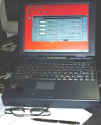
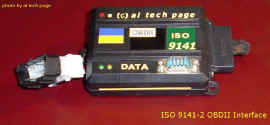
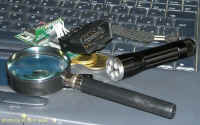
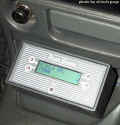
Generic OBD-II Live Data vs. Exhanced Data Stream by Toyota Techstream



